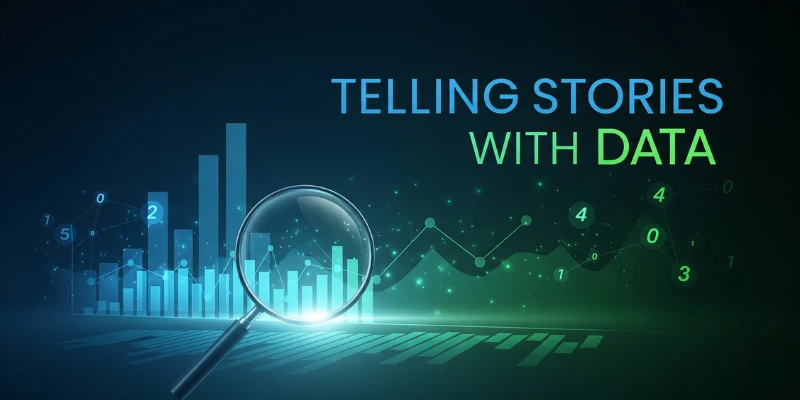
In the world of data analytics, numbers alone are rarely enough to drive decisions. The real power of data lies in the ability to translate it into clear, compelling stories that inform, persuade, and inspire action. This approach, known as data storytelling, blends analytical insight with narrative and visuals to communicate findings in a meaningful way. For those looking to master this skill, enrolling in a Data Analytics Course in Hyderabad at FITA Academy can provide the essential knowledge and hands-on experience. Below are several real-world examples that show how storytelling with data creates impact across different industries.
Enhancing Customer Experience in Retail
One of the most common applications of data storytelling is in the retail sector. Retailers frequently gather extensive data regarding customer behaviour, such as browsing habits, purchase records, and feedback. By organizing this data into a storyline, companies can uncover patterns that lead to better customer engagement.
For example, a large online retailer once noticed that cart abandonment rates were unusually high on mobile devices. A deeper analysis revealed that the mobile checkout process was causing user frustration. Instead of simply presenting the metrics in a report, the analytics team crafted a narrative showing how users moved through the purchase journey and where they dropped off.
Paired with visual dashboards, this story led directly to a redesign of the mobile experience, reducing cart abandonment and boosting conversions. Learning how to analyze and communicate such insights effectively is a key focus of a Data Analyst Course in Pune, which trains professionals to turn data into actionable business stories.
Improving Public Health Outcomes
Data storytelling has also played a crucial role in public health. During flu seasons or health crises, public health organizations need to communicate vital information quickly and clearly. Numbers on their own may not be enough to change behavior.
In one case, a city health department used data analytics to track vaccination rates by neighborhood. Instead of only reporting figures, the team built an interactive map showing where vaccination uptake was low. They added context with community demographics and access to healthcare facilities.
This visual and narrative-driven approach helped local leaders understand not just the what, but the why behind the numbers. As a result, targeted campaigns were launched, leading to improved vaccination rates in under-served areas. Developing skills to create such impactful data stories is a key part of a Data Analyst Course in Mumbai, where students learn how to use analytics for real-world problem solving.
Optimizing Operations in Manufacturing
Manufacturing companies often rely on data analytics to identify inefficiencies in their production lines. One manufacturer used sensor data to monitor machine performance across multiple factories. While the raw data pointed to frequent downtime, the story behind the numbers was more insightful.
The analytics team traced downtime events to specific times of day and shifts, uncovering a pattern linked to maintenance schedules and operator training levels. By telling this story in a simple timeline with key highlights, the company was able to implement changes that improved operational efficiency. The value wasn’t just in identifying the problem, but in explaining it clearly through storytelling.
The Value of Storytelling in Data Analytics
These examples show that telling stories with data isn’t just about making information look better. It’s about making insights accessible and actionable. Whether it’s through dashboards, presentations, or written reports, effective data storytelling bridges the gap between data scientists and decision-makers.
For professionals looking to hone these essential skills, enrolling in a Data Analytics Course in Delhi can provide the training needed to turn complex data into clear, engaging narratives. In today’s data-driven environment, knowing how to find insights is only half the job. Being able to communicate those insights in a clear, engaging way is what truly drives impact.
Also check: The Importance of Real-Time Analytics in a Fast-Paced World
